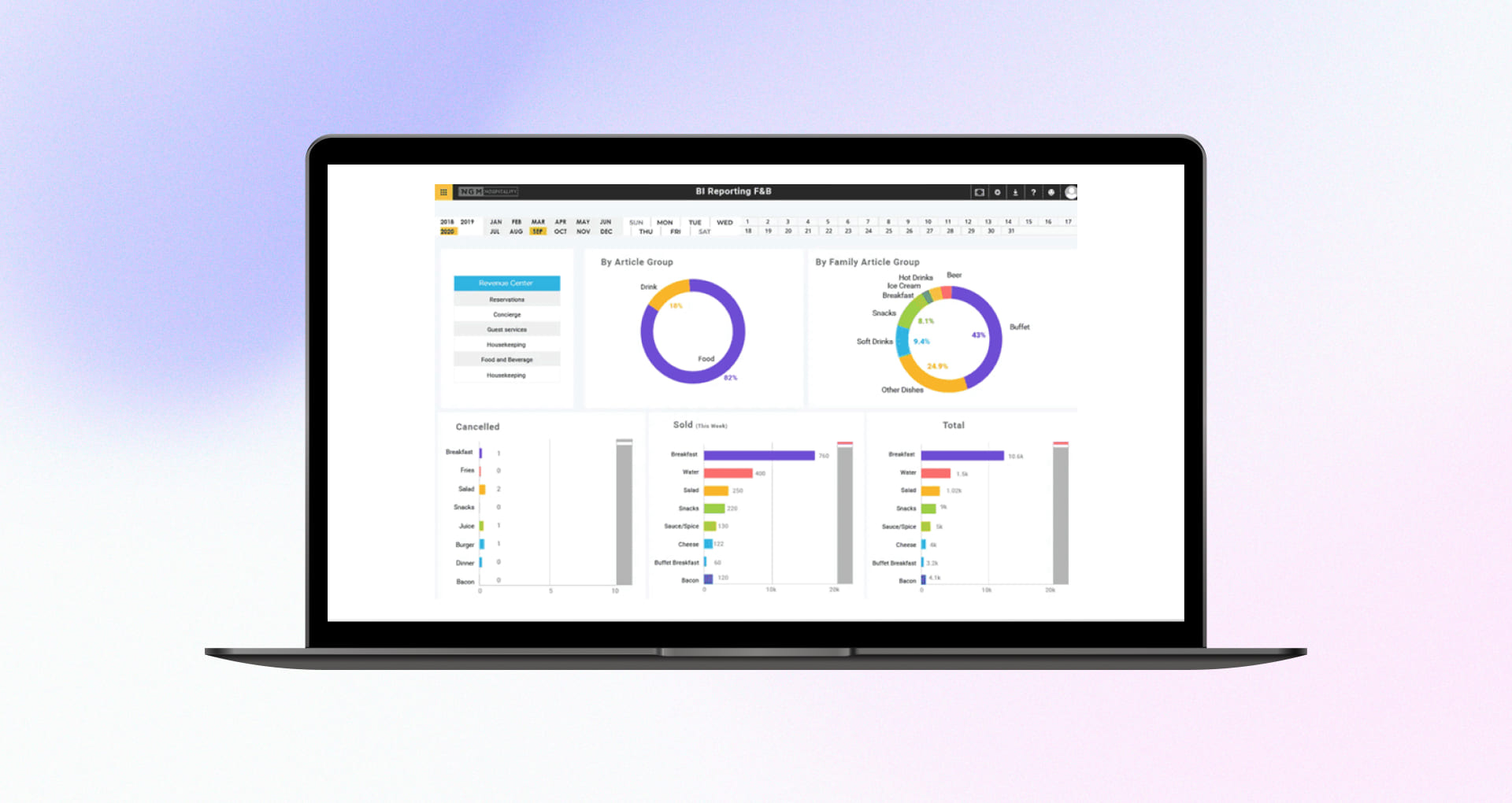By 2027, 60% of organizations are expected to miss the anticipated value of their AI initiatives due to fragmented data governance frameworks. Meanwhile, by 2025, unstructured data is expected to account for over 90% of global enterprise data, compounding governance challenges.
For data engineering teams, this isn’t just a forecast; it’s a call to action. They are the architects of data pipelines, the keepers of data quality, and the enablers of data-driven decision-making. Without a robust data governance strategy, pipelines falter, insights become unreliable, and opportunities slip away.
This blog zeroes in on why a data governance strategic plan is essential, the top data governance frameworks to implement this year, and practical strategies for embedding a data governance approach into data engineering workflows. We will also discuss the real-world examples of global enterprises that have transformed their data operations through effective governance and how Rishabh Software can help you achieve the same.
Why Data Governance Matters for Data Engineering Teams
As pipelines scale and regulatory scrutiny intensifies, data engineering teams sit at the frontline of risk, efficiency, and business value. Without structured governance, teams lose visibility, trust, and control. With it, they can become scale, resilience, and strategy enablers.
1. Operational Efficiency & Data Quality
- Enforces consistent schemas and formats across pipelines
- Detects issues early using automated validation
- Improves root-cause resolution with metadata and lineage
2. Risk Management & Compliance
- Applies automated PII detection and access controls
- Enables audit trails for regulations like GDPR, HIPAA
- Prevents unauthorized data exposure across systems
3. Team Collaboration & Productivity
- Standardizes definitions via shared data catalogs
- Clarifies ownership and stewardship across teams
- Speeds up onboarding and reduces redundant work
4. Business Alignment & Value Creation
- Connects pipelines to measurable business KPIs
- Enables safe data sharing across teams and platforms
- Supports AI/ML initiatives with reliable input data
5. Architecture & Scalability
- Supports data mesh with domain ownership
- Embeds checks into orchestration tools
- Improves data reliability in real-time systems
Data engineering teams need data strategies and governance frameworks that scale, automate, and adapt to modern data stacks. Let’s move to the next section, where we uncover the top data governance framework to implement in 2025.
Best Data Governance Frameworks to Leverage in 2025
Below are some of the most practical and widely adopted frameworks, which have been proven to ensure data integrity, compliance, and strategic alignment for real-world engineering execution.
1. DAMA-DMBOK (Data Management Body of Knowledge)
Offers a comprehensive framework covering all aspects of enterprise data management.
Key Components:
- Data governance principles emphasize accountability and transparency.
- Defined roles like data stewards and custodians.
- Policies for data quality, security, and compliance.
- A maturity model to assess and improve data governance practices.
Use Case: Ideal for enterprises seeking a holistic approach to data management.
2. COBIT (Control Objectives for Information and Related Technologies)
Formulated by ISACA, this framework focuses on IT governance and aligns IT processes with business goals.
Key Components:
- Frameworks for aligning IT with business objectives.
- Risk management strategies for data governance activities.
- Performance metrics to evaluate the data governance process.
- Guidelines to ensure compliance with legal and regulatory requirements.
Use Case: Suitable for businesses aiming to integrate IT governance with data management.
3. DGI (Data Governance Institute) Framework
Provides a structured approach to data governance by focusing on decision-making and accountability.
Key Components:
- Clear value statements and measurable goals.
- Defined data rules, decision rights, and accountability structures.
- Controls and standards for data acquisition, storage, and flow.
- Emphasis on people and processes, including the establishment of a data governance office.
Use Case: Best for organizations looking to establish clear governance structures and accountability.
4. SAS Data Governance Framework
Developed by SAS, this framework links data governance to corporate objectives to ensure executive support.
Key Components:
- Alignment of data governance initiatives with business goals.
- Comprehensive data governance strategy including objectives and decision-making bodies.
- Focus on data stewardship and management.
- Integration of people, processes, and technology for effective governance.
Use Case: Recommended for companies aiming to integrate data governance with business strategy.
5. BCG (Boston Consulting Group) Data Governance Framework
Emphasizes structured data governance through clear roles and operating models.
Key Components:
- Establishment of clear data structures and catalogs.
- Development of data policies ensuring reliability and security.
- Utilization of appropriate data tools for governance.
- Implement a Target Operating Model (TOM) with defined roles like Chief Data Officer.
Use Case: Suitable for organizations seeking structured governance with defined roles and processes.
Building a robust data governance strategic plan is essential for ensuring data integrity, compliance & value generation across an enterprise. The following section defines a comprehensive data governance strategy and roadmap.
Data Governance Strategies for Data Engineering: Roadmap & Key Steps
Data engineers can implement this data governance program to align data assets with business objectives while establishing clear guidelines for data ownership, quality management, and security. This phased approach effectively integrates governance frameworks, processes, and technologies into data engineering workflows for enhanced decision-making capabilities.

1. Implement a Business-Aligned Governance Framework
Strategic data governance begins with alignment to business objectives rather than technology constraints. Select a framework that fits your organizational maturity and industry requirements:
- Federated Model – Distributes authority across business units while maintaining central standards, which is ideal for enterprises with diverse departments requiring domain-specific governance
- Centralized Model – Establishes a single authority for all data decisions, which is highly effective for businesses prioritizing consistency and compliance
- Hybrid Model – Combines central oversight with domain flexibility and balances standardization with adaptability
Roadmap and Program Plan:
- Phase 1– Assess data maturity using standardized models (e.g., DCAM, DAMA-DMBOK) and map governance capabilities to business objectives.
- Phase 2 – Develop a Minimum Viable Governance Program focusing on high-value/high-risk data domains.
- Phase 3 – Define and implement measurable success metrics tied to business outcomes, aligning governance initiatives with strategic business drivers.
2. Engineer Role-Based Governance Systems
Effective governance requires a clear delineation of who makes decisions about what data assets:
- Data Owners – Accountable for data quality and proper usage
- Data Stewards – Implement policies and resolve domain-specific issues
- Data Custodians – Responsible for storage, processing, and security
- Data Engineers – Design and build a data pipeline with governance controls
- Platform Engineers – Build self-service governance capabilities
- Data Consumers – Varying access and utilization rights
Roadmap and Program Plan:
- Phase 1 – Develop RACI matrices for key data processes, defining roles and responsibilities across governance systems.
- Phase 2 – Integrate governance checkpoints into CI/CD pipelines, ensuring governance is embedded in data workflows.
- Phase 3 – Implement progressive data access tiers and establish dedicated data governance channels for rapid issue resolution.
3. Establish Comprehensive Metadata Management
Metadata is the foundation of effective governance. Modern approaches go beyond basic cataloging to enable active data discovery and lineage:
- Technical Metadata – Schema definitions, data types, format specifications
- Operational Metadata – Processing frequency, pipeline SLAs, failure rates
- Business Metadata – Definitions, owners, sensitivity classifications
- Usage Metadata – Access patterns, query frequency, user interactions
Roadmap and Program Plan:
- Phase 1 – Implement automated metadata extraction within ingestion pipelines to ensure comprehensive data cataloging.
- Phase 2 – Develop business-contextualized data dictionaries for critical datasets to enhance discoverability and usability.
- Phase 3 – Deploy a knowledge graph solution to map relationships between data assets, enabling data lineage and impact analysis.
4. Integrate Quality Management Throughout the Data Lifecycle
Quality assurance should be shifted left in the data pipeline to prevent downstream issues:
- Preventive Controls – Schema enforcement, constraint validation at ingestion
- Detective Controls – Automated profiling, drift detection, anomaly identification
- Corrective Controls – Exception handling, remediation workflows, quality dashboards
Roadmap and Program Plan
- Phase 1 – Define data quality SLAs for critical data products, establishing baselines for acceptable data quality.
- Phase 2 – Implement automated testing frameworks (e.g., Great Expectations, dbt tests) to identify and resolve quality issues early.
- Phase 3 – Develop quality scoring mechanisms that impact data discoverability, preventing low-quality data from propagating through systems.
5. Architect Defense-in-Depth Security Controls
Modern data security requires layered protection and privacy by design principles:
- Identity Security – Strong authentication, role-based access control, just-in-time access
- Data Security – Field-level encryption, dynamic data masking, and tokenization
- Infrastructure Security – Network isolation, endpoint protection, secure configurations
- Process Security – Separation of duties, least privilege enforcement, audit trails.
Roadmap and Program Plan
- Phase 1 – Implement attribute-based access control for more granular permissions management.
- Phase 2 – Deploy data security posture management tools to monitor data assets continuously.
- Phase 3 – Develop automated security testing mechanisms for data pipelines, ensuring compliance with security standards.
6. Design for Compliance by Default
Shift from reactive compliance to engineered compliance through automation:
- Compliance as Code – Policy definitions translated into testable rules
- Automated Assessments – Continuous evaluation of compliance posture
- Evidence Generation – Automatic creation of compliance artifacts
- Regulatory Change Management – Monitoring for and adapting to new requirements
Roadmap and Program Plan
- Phase 1 – Develop a unified control framework mapping multiple regulatory requirements.
- Phase 2 – Implement regulatory classification tagging during data discovery to enhance data tracking.
- Phase 3 – Deploy policy-as-code solutions to enforce compliance rules at scale
7. Implement Intelligent Data Lifecycle Management
Modern data management services go beyond basic retention policies to optimize value extraction and cost management:
- Value-Based Tiering – Storage placement based on business importance
- Access-Informed Archiving – Retention decisions driven by usage patterns
- Automated Disposition – Rules-based deletion and anonymization
- Lifecycle Analytics – Metrics to optimize storage and processing costs
Roadmap and Program Plan
- Phase 1 – Define business-driven criteria for data classification across its lifecycle, linking data value to business objectives.
- Phase 2 – Implement tiered storage strategies with automated migration policies to balance cost and performance.
- Phase 3 – Develop cost attribution models to drive accountability for data lifecycle decisions.
8. Leverage Modern Governance Tooling
The right tools can significantly reduce governance overhead while improving effectiveness:
- Data Observability Platforms – Automated monitoring of pipeline health and data quality
- Policy Engines – Centralized policy definition with distributed enforcement
- Data Catalogs with Active Governance – Discovery, lineage, and policy management
- Governance Workflow Automation – Task routing, approvals, and documentation
Roadmap and Program Plan
- Phase 1 – Evaluate existing platforms for governance capabilities before introducing new tools.
- Phase 2 – Integrate governance tooling with robust APIs, enabling seamless workflow automation.
- Phase 3 – Implement governance chatbots and internal tool extensions to embed governance into daily workflows.
9. Facilitate a Governance-Aware Engineering Culture
Technology alone cannot ensure governance success; it requires cultural alignment:
- Education Programs – Role-specific training on governance principles
- Community Building – Data champions network across business units
- Success Celebration – Recognition of teams exemplifying good governance
- Friction Reduction – Continuous improvement of governance processes
Roadmap and Program Plan
- Phase 1 – Develop governance-specific training modules tailored to data roles, reinforcing core governance principles.
- Phase 2 – Establish a data governance champions network to promote best practices and share success stories.
- Phase 3 – Create governance maturity assessment tools for teams to self-evaluate and identify improvement areas.
Now that you know how to leverage data as a strategic asset effectively, let’s draw some insight from actionable data governance strategy examples that illustrate how well-defined plans can translate into impactful, real-world case studies.
Real-World Examples of Companies Implementing Data Governance Strategies for Data Engineering
Here are real-world case studies of how leading organizations utilize data governance strategies to empower their data engineering teams, enhance data quality, streamline operations, and facilitate faster, more reliable business decisions.
1. Uber
Challenge
Process petabytes of data and ensure real-time, federated data governance across global operations.
Solution
Implemented federated real-time queries and enhanced data governance frameworks to manage massive data volumes’ access, quality, and security.
Outcomes
- Enabled real-time analytics at scale for engineering and business teams.
- Improved data quality and reduced latency in data-driven decision-making
2. Unilever
Challenge:
Complex global operations with thousands of suppliers and customers, lacking unified master data management, and efficient vendor onboarding.
Solution:
Partnered with MDM solution providers to centralize and document data points, deployed low-code/no-code tools for master data management, and streamlined HR onboarding.
Outcomes:
- Centralized data improved efficiency, quality, and speed.
- Vendor onboarding time reduced from days to hours.
- Enhanced operational control and data consistency across 40% of global operations
3. Airbnb
Challenge:
Needed to promote responsible, data-driven decision-making and data literacy across all teams.
Solution:
Launched “Data University” to educate employees on data governance, literacy, and responsible data use.
Outcomes:
- Democratized data access and responsible usage.
- Scaled data-informed decisions across engineering and business teams
How Rishabh Software Helps You Accelerate Data Governance Success with Customized Strategies
At Rishabh Software, we help our clients establish robust data governance frameworks tailored to their data engineering needs. Our data engineering services integrates industry best practices with customized solutions to tackle their unique data challenges.
Our Data Governance Services Include:
Assessment and Roadmap Development
- Conduct comprehensive evaluations of existing data governance practices
- Develop customized roadmaps aligned with modern data and analytics governance foundations
- Create strategic data governance implementation plans with clear milestones and deliverables
Implementation Support
- Deploy adaptive data governance operating models tailored to your organization.
- Establish data quality frameworks and metadata management systems.
- Implement governance tools and technologies that scale with your needs.
Continuous Improvement
- Measure governance effectiveness through key performance indicators.
- Facilitate stakeholder alignment to drive business value from data assets.
- Provide ongoing support to evolve governance strategies as business needs change.
The Rishabh Advantage
Our tried-and-tested methodology acknowledges that effective data governance is not a one-time project but an evolving capability. We help clients:
- Establish the proper foundation for data-driven initiatives
- Align all stakeholders around common data objectives
- Create governance structures that balance control with innovation
- Develop self-sustaining governance capabilities within their teams
You can count on us to transform data governance from a compliance exercise into a strategic advantage that enhances trust in data, improves decision-making, and accelerates digital growth.
Success Story: Cloud-based Data Warehouse System for F&B & Resort Management

Challenge:
- The client, a large US-based hospitality group, faced challenges with data silos and disparate data sources (20+), resulting from multiple acquisitions.
- They needed to unify business data, streamline integration across systems (PMS, POS, analytics, inventory), and enable better governance and reporting.
Solution:
Rishabh Software delivered an enterprise data management platform with a strong focus on data governance:
- Operational Data Store (ODS): Centralized data collection and cleansing.
- ETL and Data Warehouse Creation: Standardized, governed data flows and storage.
- BI Integration: Enabled governed, role-based access to insights and reports.
- Cloud Deployment: Ensured scalable, secure, and compliant data management.
Governance Features:
- Standardized data definitions and quality controls.
- Centralized access and role-based permissions.
- Improved data lineage, traceability, and auditability.
- Regulatory compliance and data security measures.
Measurable Outcomes:
- 50% boost in workflow efficiency
- 40% decline in data quality issues
- 99% accuracy of business understanding
Learn more about how a cloud-based data warehouse system helped our hospitality client enhance data integration, reporting, and decision-making.
Frequently Asked Questions
1. How does governance ensure compliance and data quality?
Strategic data governance helps:
- Establish clear policies for data usage and access.
- Enforce regulatory requirements
- Track data lifecycle for accuracy and consistency.
- Implement audit trails and accountability mechanisms.
- Define roles for ownership and stewardship to maintain data integrity.
2. What tools and technologies support data governance?
- Data catalogs (e.g., Alation, Collibra) for metadata management.
- Data lineage tools (e.g., Informatica, Atlan) to trace data flow.
- Master data management (MDM) platforms for consistency.
- Policy enforcement tools for access control and compliance.
- Automation frameworks for monitoring and alerts.
3. What are the challenges in implementing governance frameworks & its solutions?
- Challenge: Siloed data and poor collaboration.
Solution: Promote cross-functional data ownership. - Challenge: Inadequate tools and resources.
Solution: Invest in scalable governance technologies. - Challenge: Resistance to change.
Solution: Conduct training and change management programs.
4. What are the 4 pillars of data governance?
- Data Ownership – Assigns accountability for data assets.
- Data Quality – Ensures accuracy, consistency, and completeness.
- Data Security – Controls access and protects sensitive data.
- Compliance & Policy Management – Aligns with laws and internal standards.
5. What is a Data Governance Program?
A structured data governance process is an initiative to:
- Manage, protect, and optimize data assets.
- Define roles, responsibilities & rules for data usage.
- Integrate tools, processes & standards for governance.
- Support data-driven decision-making across the board.
6. What Is a Data Governance Roadmap?
- A step-by-step plan to implement governance initiatives.
- Defines short- and long-term goals with timelines.
- Defines milestones for policy creation, tool deployment, and adoption.
- Aligns governance strategy with business priorities.











 30 Min
30 Min


